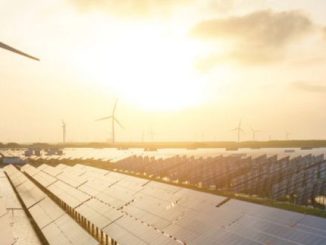 By Manoj Vyas, Renewable Energy, KEIPL
By Manoj Vyas, Renewable Energy, KEIPL
The Paris Agreement, signed in April 2016 under the United Nations Framework Convention on Climate Change, set the scene for a sustainable future. Its long-term objective is to keep the increase in global average temperature to well below 2 °Celsius above pre-industrial levels, and limit the increase in temperature to 1.5 °Celsius. However, the current scenarios project a potential global warming of 3-3.2 °Celsius by 2100, even if all the national commitments are met. In order to meet the long-terms goals of the agreement, actionable measures are required towards global net zero emissions by 2050. For greater impact, a number of challenges also need to be addressed. These include:
Carbon markets and transparency framework: Even today, in most developing countries, data for greenhouse gas (GHG) emission reports is collected from inconsistent sources that provide only rough estimates. The Paris Agreement requires all signatories to provide accurate data on their GHG emissions in order to validate assumptions on current baseline emission scenarios, and increase ambitions over time to track progress made towards national climate commitments.
Climate finance: Achieving the Paris Agreement goals will require significant investments. The International Energy Agency estimates an average annual investment of $3.5 trillion in the energy sector globally until 2050. As part of the agreement, developed countries have already committed to mobilise $100 billion in climate finance every year by 2020 to support developing countries. Despite these contributions, there is a huge financial gap largely due to limited private investment. One way of leveraging private finance is to provide appropriate incentive structures such as carbon markets for businesses to transition to low-carbon technologies. Another option is to facilitate investments in profitable low-carbon initiatives (through green bonds or crowdfunding), which are constrained due to high friction costs and poorly developed accountability mechanisms.
Clean energy: To achieve carbon neutrality by 2050, a rapid shift to clean energy technologies is needed. In 2010, fossil fuel-based energy generation contributed to roughly 70 per cent of GHG emissions globally, even as renewables accounted for 70 per cent of net generation capacity additions. As per Bloomberg, wind and solar will comprise almost 50 per cent of the world’s total generation capacity by 2050. The World Bank-IFC estimates climate investment opportunities of nearly $23 trillion in emerging markets between now and 2030. A large deployment of clean energy technologies, particularly wind and solar, will lead to decentralisation and intermittency. In view of this trend, new market structures and regulations need to be introduced for energy markets to function effectively.
Case for blockchain: A perfect pairing of the problem and its solution
Emerging technologies such as blockchain can accelerate global actions towards climate change. The key features of blockchain, such as an immutable audit trail of transactions, cheap and borderless transfer of values and automated execution of contracts can help address challenges related to climate action implementation. Specifically, this technology can act as a transparency mechanism that incentivises emission reduction, and provides a decentralised infrastructure to enable new business models in climate finance and clean energy generation. National accounting of GHG emission reduction, connected through a ledger recording the international transfer of emission reduction, increases the transparency and accountability of all actors. Similarly, financial flows can originate from anyone and from anywhere in the world, and can be directed towards specific projects under predefined conditions with tamper-proof documentation of every transaction. Blockchain is being recognised as one of the key technologies in the implementation of the agreement. It can tackle the enormous climate change challenge for global climate governance stakeholders including state governments, international climate funds, development finance institutions, technology innovators and entrepreneurs across sectors.



